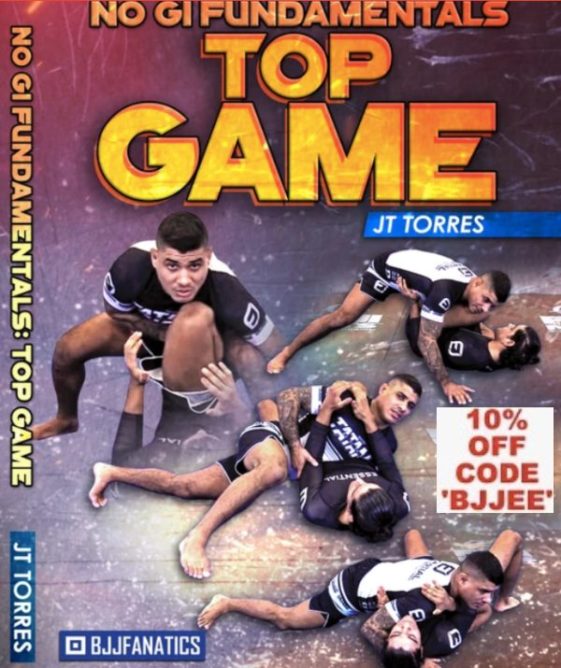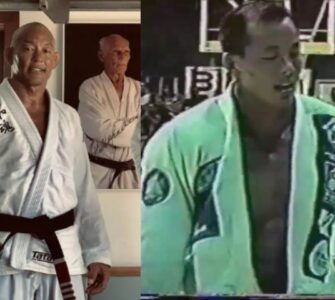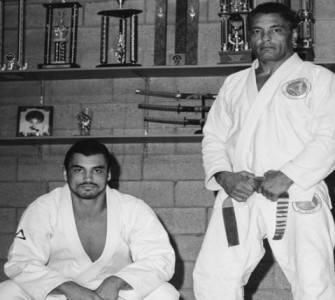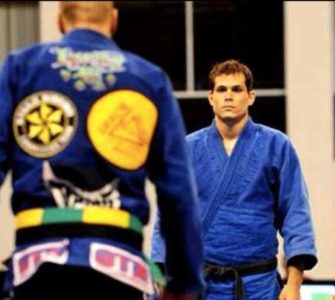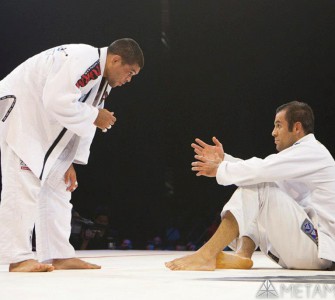He is one of today’s most exciting lightweight grapplers – an athlete whose technique finesse and entertaining style have brought him to becoming a number one not just for many fans of the gentle art; but to becoming a champion with many accomplishments both before and after getting promoted to black belt as well.
Jonathan „JT“ Torres has already left an important legacy on a contemporary grappling scene, and will continue to do so in the upcoming years.
Source: Translated from french from the very good website Pantarei.fr , check them out if you speak French!
Jiu-jitsu is in constant evolution. The sport is evolving all around the world but remains overwhelmingly dominated by Brazilians. Some non-Brazilian competitors, however, want to change that and do their best to get the coveted title of world champion at black belt. Among these competitors, the name of one of them comes back more often. He is an American and has agreed to answer our questions: JT “Spiderman” Torres.
Panta Rei: Have you ever traveled to Brazil for training? If so, what are the main differences you have found between their practices and those in the U.S.?
Torres JT : Yes, I’ve been to Brazil several times and I trained each time. I think the big difference between the two is that Jiu-Jitsu has been around much longer in Brazil and consequently there are many more black belts and higher belts in academies, which increases the level of training.
PR: When you are not preparing for a competition, what percentage is drill vs. sparring during your workouts?
JT : When I am not training for a competition, I drill as much as when I prepare for a competition. I drill at least 2 hours every day. Driling has become a routine in my workouts.
PR: Many athletes who have successfully competed in brown and purple belt can not breakthrough when passing black belt. However, you have managed to impose yourself immediately in one of the most difficult weightclasses. What allowed you to do this and what are the mistakes that you think most fighters do when they reach black belt.
JT : I think the main reason is that they do not have the right mind needed to win at the highest level. Purple and brown belts are in a situation where they usually have one or two formidable opponents in their division, whereas in black belt, all weight classes are filled with experienced fighters who are all capable of winning the worlds. I think that I’ve had success early on, firstly because I am mentally strong, and secondly, I do not show too much respect to my opponents. I think if you let yourself be impressed by the track record of your opponent, it can and will affect the outcome of the battle and are the biggest mistakes that purple and brown belts commit.
PR: You have to your credit a large number of competitions and you always seem confident in your fights. Are you still stressed before a competition and do you have any advice to better manage stress?
JT : You have to stay calm and cool against any stressful situation, because if you do not do it is that the situation does ‘escapes. I would not say I’m stressed before a competition but I’m nervous before a fight. Being nervous before fighting I think is a good thing because it allows you to stay in the game. One tip I would give to people who are too stressed is to try to visualize a situation and think of something that relaxes you, like being at the beach or with friends.
PR: Your game is very aggressive and you’re always looking for the submission. Have you ever thought of changing the style to play more with the points and take fewer risks? We think of your final of the European Championships against Satoshi where your armbar attempt may have been a mistake.
JT : My game is very focused and aggressive submission, but sometimes it has been the cause of some of my defeats as the final of the European Championships. Trying the armlock instead of taking back against Satoshi was a mistake. My game will still be aggressive and forward the submission, but I work with my coach Lloyd Irvin to learn to play with more points and benefits to be more strategic in my fights
PR: Your grip is said to be very hard to break, it is for this reason that you received the nickname “Spiderman.” Did you special exercises to develop?
JT : Honestly, I improved my grips just grabbing a lot kimono. Since the first day I started to train, I used a lot of grips and I climb rope. I recommend climbing rope grips to improve.
PR: How important is it for you to grip in jiu-jitsu? It is as important than in judo? Do you think it is too neglected by some clubs?
JT : The grip jiu-jitsu is VERY important! The first grip in a fight can determine the pace and outcome. I think without a doubt that jiu-jitsu, grip is also important like in judo. I think many academies are careless of grip, because they do not know its importance. The grip itself is a game in itself.
PR: Do you think break gripping can be useful for grappling? What do you prefer between gi and no-gi? What is the proportion of training between gi and no-gi at a normal training week (out of competition)?
JT : Yes, learning how to break grips or even while training with the kimono opens your mind to no-gi. I prefer the gi, I am a nardcore practitioner of jiu-jitsu. All my training is in kimono, I train no-gi only when I have major competitions. So during a normal training week, I do not do no-gi.
PR: In your fight against Caio Terra, you submitted him with a armbar from the 50/50 A rare or unusual movement, have you invented it? What are the main key points for success? Is that the difference in strength was an important factor?
JT : The armlock I did on Caio was a technique I used a lot in training. One day, I started to try it, I’d never seen it before, it’s just an inspiration that came to me one day by improvising with one of my partners. The key to success is to carefully control the arm you want to attack. I do not think the difference in strength was an important factor, because Caio has already beaten opponents much bigger and stronger than me.
PR: Do you think the 50/50 guard will become less criticised with this type of development? Do you think this will silence critics who see it as “blocking” the fight?
JT : I feel that the 50/50 is more accepted today, but I think there will always be criticism of this position, because unfortunately, some people still use it to block the fighting.
PR: Being an elite athlete often requires a lot of sacrifices. What were the biggest sacrifices you had to make so far?
JT : The biggest sacrifice I had to do to become a champion was not to see my family and not spend as much time as I’d like with it.
Impose Your Top Game On Anyone With These Grappling Fundamentals.
- Sharpen your top game with these gold medal no gi fundamentals from 2-time ADCC Champion JT Torres.
- Pass all of no gi grappling’s most difficult and common guards with these techniques that has turned JT Torres into a guard passing machine.


